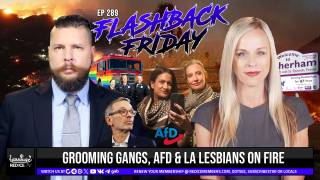Solutions for Gulf Oil Spill
Source: youtube.com
Clean Up - Oil Eating MicrobesCap The Well - Smart Pipe
Further Cleanup - Hay
Oil-eating microbes seen as possible solution to spill
One scientist compares them to the yellow chompers in the Pac-Man video game — hungry, single-minded little microbes fueled by the same fertilizer farmers use on soybeans, gobbling hydrocarbons from the oily waters, marshes and shores of the Gulf of Mexico.
Can the naturally occurring microbes help clean up the oil spill? Yes, experts say. At least in part, with some risk.
Officials are taking note. Florida Gov. Charlie Crist on Thursday visited a Sarasota company that sells microbes that eat oil. BP says it is open to using them. And the federal government is contacting its preapproved list of more than a dozen companies to see how quickly they can ramp up production.
Scientists call the process bioremediation.
"You take natural oil-eating microbes in the water and give them fertilizer to make them multiply and degrade the oil faster. Oil is a natural product. It's inherently biodegradable," said Terry Hazen, microbial ecologist in the Earth Sciences Division of the Lawrence Berkeley National Lab in California.
Oil-eating microbes are some of the smallest living things on Earth, but they can have a powerful impact. They occur naturally in water, and when they come into contact with oil, they eat it, producing the byproducts carbon dioxide and water. When fertilized with nitrogen and phosphorous, they grow and multiply, and their appetites become prodigious.
Still, scientists caution that bioremediation is only a partial solution. It is best used on sandy beaches and in salt marshes after the thickest oil has been removed by bulldozer and shovel. It has never been tried before in deep water or open ocean.
It also runs some risk of damaging the very waters it is meant to rescue. Some scientists say it might be better at times to let nature take its course.
Jay Grimes, a microbiologist at the University of Southern Mississippi, is a fan of the process: "It could help a lot. It was used in the Alaska oil spill (from the Exxon Valdez in 1989). It worked very well on the rocky shores."
Bioremediation cannot do the whole job, said Chris Reddy, marine chemist at Woods Hole Oceanographic Institution in Massachusetts.
"The idea that microbes can come in and clean house from A to Z is not likely," he said. "What they can do, on their own time, is eat some compounds and play an important role in the cleanup."
BP says it is looking into bioremediation. "Potentially we could do it, but we would need approval from the EPA," spokesman Tristan Vanheganu said last week. "Typically it's not done until the oil has stopped flowing."
The federal government is working on possible bioremediation efforts. The EPA has created a National Contingency Plan Product Schedule listing more than 20 biological agents approved for use in encouraging microbes to attack oil spills.
The USDA's Natural Resources Conservation Service is contacting the companies that make them to see how quickly they can ramp up production.
There is yet another oil-eating product, called Munox, made by Osprey Biotechnics of Sarasota, that has drawn interest from Florida officials. Munox isolates natural microbes from nature, ferments them and adds proprietary ingredients to turn them into a concentrated liquid form to spray on oil spills.
But there is a danger. Too much fertilizer can create blooms of algae that use up all the oxygen in the surrounding water, creating "dead zones." There is a 6,000-square-mile dead zone in the Gulf off the mouth of the Mississippi River, created years ago by the same fertilizers washing down from upriver farms.
"It's pretty big and pretty scary," said Jim Spain, professor of environmental engineering at Georgia Tech.
As much as 20 million gallons of oil a year naturally seeps into the Gulf through tiny fissures in the sea bed. Over time, microbes have evolved that eat the oil in the water, enough so that all the seeping oil does not create a sheen.
The microbes are neither plant nor animal. They are bacteria, with names such as Alcanivorax borkumensis.
But the huge BP spill has overwhelmed existing microbes. To grow enough in size and number to cope with the spill, they need nitrogen, phosphorous and iron.
"They're like Pac-Men. Their mouths are only so big," Reddy said. "Their ability to eat oil is closely coupled to their number."
Fueled by fertilizer, the microbes can multiply and eat the oil. That is the upside. The possible downsides are less well-understood.
"There hasn't been a full-scale addition of fertilizer in the open ocean to clean up a spill," Spain said. "There's never been an experiment as big as this. We have to be very careful."
Scientists differ over the success of past bioremediations.
In Alaska after the 1989 Exxon Valdez spill, cleanup crews spread nitrogen and phosphorus in liquid sprays and slow-release pellets on hundreds of miles of oil-coated rocks in Prince William Sound to quicken the action of natural microbes in eating the oil, says Ronald Atlas, a microbiologist at the University of Louisville who took part in the cleanup.
Atlas says, and a 1991 EPA after-action report confirms, that the fertilizer increased the degradation of the oil three- to five-fold, with no damage to the environment.
"The beaches became visually cleaner," the report said.
Hazen, who studied the project, has a different conclusion. He says the bioremediation of the sound with phosphorous and nitrogen wrought severe long-term damage to its ecology.
"We took a low-nutrition environment and added lots of fertilizer. The phosphorous created nuisance algae."
Bioremediation in the Gulf of Mexico must be thoroughly studied and done carefully, the experts agree.
"There may be reason to use it where the oil is not degrading fast enough," Hazen said. "In other cases, the best thing may be to do nothing."
Scientists differ on whether fertilizing natural microbes can help degrade deep oil plumes as far as 3,300 feet beneath the surface of the Gulf. Georgia Tech's Spain said he fears fertilizing microbes at great depths might use up the tiny amounts of oxygen that exist there, creating even more oxygen-depleted dead zones.
Earlier this month, Hazen and his team set out in boats to examine the plumes, taking 200 water samples in the Gulf. They found microbes already in existence and noted it might not be necessary to add fertilizer. But nearer shore, on sandy beaches and in salt marshes, microbes might have a bigger role, Hazen said.
"The best thing you can do is to use sorbents and skimmers to get as much as you can. Then look seriously to decide if you need to do anything else," he said.
Grimes, the Mississippi biologist, believes microbes can help in salt marshes, where oil mixes with water and grass and cannot be cleaned by bulldozers or shovels.
"The first year there's not much you can do to reverse damage to marine animals or plants in marshes. But if you can speed biodegradation, you can hope the ecosystem will start to rebuild within four or five years," he said.
He added that it is important not to let wave action wash fertilizer into the water, where it could create algae blooms.
Another potential problem is that when microbes eat oil, a byproduct is carbon dioxide, a greenhouse gas. In an area as large as the Gulf, could it be enough to hurt the ozone layer?
"We don't have that answer," Grimes said.
Despite its shortcomings, bioremediation of oil spills has influential supporters.
Albert Venosa, an environmental expert at the EPA's National Risk Management Research Laboratory who studied the issue, told a U.S. House subcommittee June 9: "Bioremediation can be very effective on sandy marine shorelines, wetlands and salt marshes. But it is much slower (than mechanical means), weeks to months or more, and is not usually considered a first response."
Source: southcoasttoday.com






















